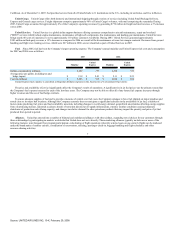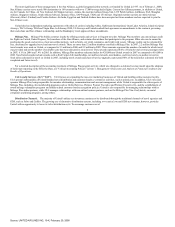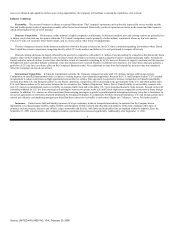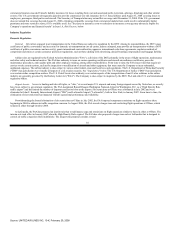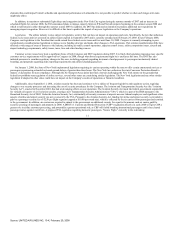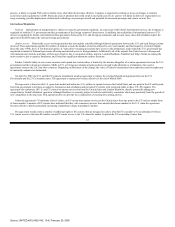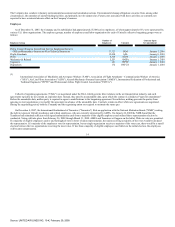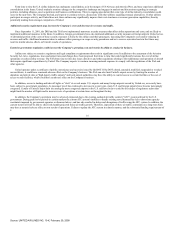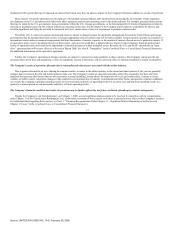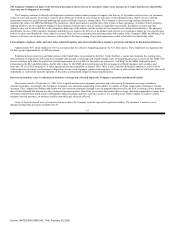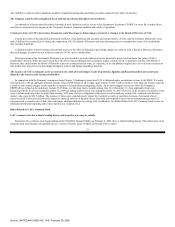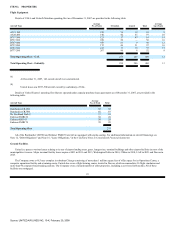United Airlines 2007 Annual Report Download - page 18
Download and view the complete annual report
Please find page 18 of the 2007 United Airlines annual report below. You can navigate through the pages in the report by either clicking on the pages listed below, or by using the keyword search tool below to find specific information within the annual report.
modernized ATC system that may be imposed on carriers like United, may have an adverse impact on the Company's financial condition or results of operations.
Many aspects of United's operations are also subject to increasingly stringent federal, state and local laws protecting the environment. Future regulatory
developments in the U.S. and abroad could adversely affect operations and increase operating costs in the airline industry. For example, potential future actions
that may be taken by the U.S. government, state governments within the U.S., foreign governments, or the International Civil Aviation Organization to limit the
emission of greenhouse gases by the aviation industry are uncertain at this time, but the impact to the Company and its industry would likely be adverse and
could be significant including the potential for increased fuel costs, carbon taxes or fees or a requirement to purchase carbon credits.
The ability of U.S. carriers to operate international routes is subject to change because the applicable arrangements between the United States and foreign
governments may be amended from time to time, or because appropriate slots or facilities may not be made available. United currently operates on a number of
international routes under government arrangements that limit the number of carriers, capacity, or the number of carriers allowed access to particular airports. If
an open skies policy were to be adopted for any of these routes, such an event could have a material adverse impact on the Company's financial position and
results of operations and could result in the impairment of material amounts of related intangible assets. Recently, the U.S. and the EU entered into an "open
skies" agreement that will become effective at the end of March 2008. See Note 8, "Intangibles," in the Combined Notes to Consolidated Financial Statements
for additional information on the open skies agreement.
Further, the Company's operations in foreign countries are subject to various laws and regulations in those countries. The Company cannot provide any
assurance that current laws and regulations, or laws or regulations enacted in the future, will not adversely affect its financial condition or results of operations.
The Company's results of operations fluctuate due to seasonality and other factors associated with the airline industry.
Due to greater demand for air travel during the summer months, revenues in the airline industry in the second and third quarters of the year are generally
stronger than revenues in the first and fourth quarters of the year. The Company's results of operations generally reflect this seasonality, but have also been
impacted by numerous other factors that are not necessarily seasonal including, among others, the imposition of excise and similar taxes, extreme or severe
weather, air traffic control congestion, changes in the competitive environment due to industry consolidation and other factors and general economic conditions.
As a result, the Company's quarterly operating results are not necessarily indicative of operating results for an entire year, and historical operating results in a
quarterly or annual period are not necessarily indicative of future operating results.
The Company's financial condition and results of operations may be further affected by the future resolution of bankruptcy-related contingencies.
Despite the Company's exit from bankruptcy on February 1, 2006, several significant matters remain to be resolved in connection with its reorganization
under Chapter 11 of the United States Bankruptcy Code. Unfavorable resolution of these matters could have a material adverse effect on the Company's business.
For additional detail regarding these matters, see Note 1, "Voluntary Reorganization Under Chapter 11—Significant Matters Remaining to be Resolved in
Chapter 11 Cases," in the Combined Notes to Consolidated Financial Statements.
17
Source: UNITED AIR LINES INC, 10-K, February 29, 2008


